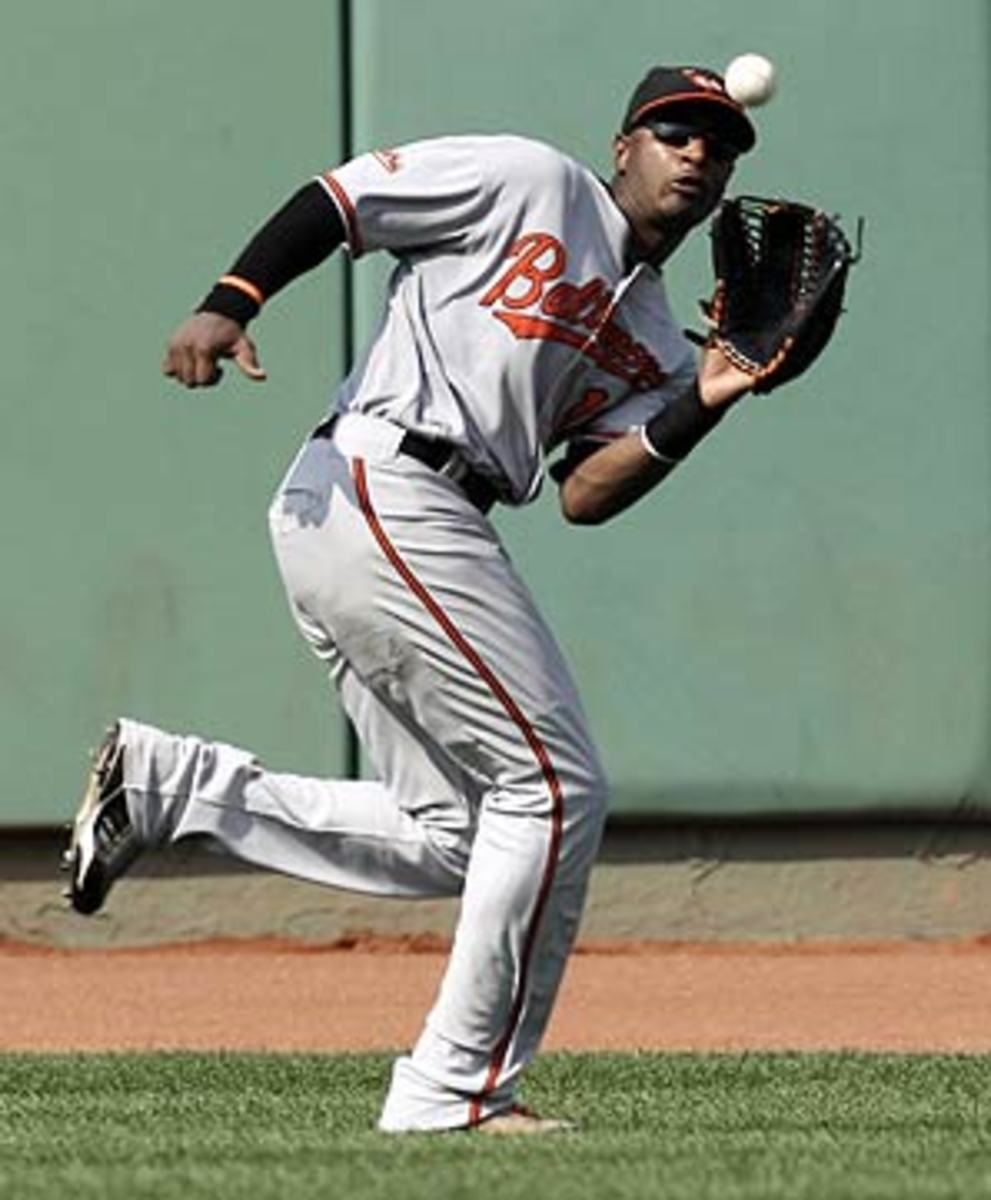Growing number of African-Americans populating MLB rosters
On the most recent day in which all 30 teams played, last Wednesday, 20 center fielders were African-American. The group included veteran All-Stars such as Torii Hunter, Vernon Wells and Curtis Granderson, but mostly it included some of the fastest rising young stars in the game, including Andrew McCutchen, Matt Kemp, Dexter Fowler, Cameron Maybin, Adam Jones, B.J. Upton, Denard Span, Austin Jackson and Michael Bourn.
That's just a snapshot of one position, but it helps illustrate that baseball may already have turned a corner in becoming a more attractive sport of choice for blacks. The issue is topical because of comments this year by Hunter, who accused teams of preferring Latinos over African-Americans, and Twins second baseman Orlando Hudson, who implied that free agents such as Jermaine Dye and Gary Sheffield have difficulty finding jobs because they are black. Much of mainstream media piggybacked on their comments by referring to the "problem" of too few African-Americans in baseball.
Is it a problem? The University of Central Florida's Institute for Diversity and Ethics in Sports apparently doesn't think so. It gave baseball an A+ grade for diversity among major league players in 2008, its most recent annual study. The Institute found that 10.2 percent of the players were black, a 24 percent increase by percentage from 2007 and the highest it has been since 2001. (The percentage of blacks in the general U.S. population in 2008 was 13.5 percent.)
SI VAULT:Why the number of African-Americans in baseball is declining (07.07.03)
Diversity is always important in baseball, especially as it relates to opportunity. All should be made welcome. But Hudson's comments in particular unnecessarily damage that perception, if only because he missed the facts on Sheffield (a 41-year-old DH who over the past two years hit .245 and missed 110 games) and Dye (who hit .179 in the second half last year and was abysmal defensively). Moreover, the GM who decided he didn't want Dye back is African-American (Kenny Williams of the White Sox) and Dye turned down $3 million to play for the Cubs.
Is there a bias in baseball? You bet. But the bias is against aging players and/or those with little or no defensive skills. One of the biggest impacts of the statistical analysis revolution is that teams can better quantify the effects of age and the quality of defense -- and such information has devalued players of all races and ethnicity as they age through their mid- to late-30s without a strong defensive component.
Time will tell, but perhaps, based on the 2008 UCF study and the snapshot of center fielders, baseball once again is becoming a more attractive option for the young black athlete. And then there is Braves left fielder Jason Heyward, who may be the most exciting player in all of baseball right now and at 20 doubtlessly appeals to kids of all races. Heyward played baseball because his father chose it for him; but then he fell in love with the game himself. It wasn't any one player he wanted to emulate. He wanted to be a professional ballplayer in every sense of the title.
"I was a Braves fan and Yankees fan growing up," Heyward said. "Both are very respected organizations. What I saw in those teams was character. Character is huge. You go up and down those lineups in the last decade and a half and you see character on the field and off -- in the community. You see that winning attitude, going about it the right way, sportsmanship...all of that.
"It definitely influenced me. It was learning by example. You go out there and play the game the right way. Every one of them say, 'We're going to do it the right way."'
Several major league clubs are ramping up their scouting of Yu Darvish, the sensational right-hander for the Nippon Ham Fighters of the Japanese Pacific League, amid their growing speculation that his club will enter him into the Major League Baseball posting process this fall. Darvish, 23, is not eligible for free agency until 2013, but major league clubs are preparing for the possibility that his club may post him after this season -- the same process in which Diasuke Matsuzaka joined the Red Sox in 2006. (Boston entered a posting bid of $51 million just to negotiate with him.)
Darvish owns a career record of 66-25 and has perhaps the most impressive arsenal of pitches in the world: mid-90s fastball, slider, curve, changeup, splitter and shuuto, a version of a two-seam fastball -- and often throws them from different arm angles. Darvish opened this season by becoming only the third pitcher in his league to strike out 10 or more batters in five consecutive games.
The major league scouts, however, must be cringing at his pitch counts. Darvish surpassed 140 pitches in three of those five starts, including 148 in his fifth one. No major leaguer has thrown that many pitches in a game in five years.
Reds pitcher Edinson Volquez flunked a drug test for a banned substance and the total number of games he will miss as part of his penalty is...zero! Boy, those are some real sharp teeth baseball has in its "best drug policy in sports." What's next if he flunks another test? No cookies and milk with lunch?
Baseball allows Volquez to serve his 50-game suspension while on the disabled list. Volquez is rehabbing from Tommy John surgery and isn't expected back until the second half of the season anyway. So major league baseball considers it a "penalty" to miss 50 games he was going to miss anyway. That's not a penalty. It's a gigantic loophole that needs to be closed. Suspensions should be applied when players are active. Is that such a hard concept to figure out?






